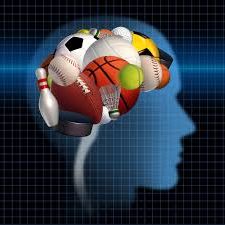
By Dr. John R. Mishock, PT, DPT, DC
In part I and II of the “Proper Training of the Brain is the Key to Developing Skill in Sports” we learned how the brain and nervous system learn and perfect movement. The underlying physiology of learning is a critical to how a coach or trainer should approach teaching sports specific skills. In this article I will address; quality vs quantity of movement and communication techniques during training.
Quality vs Quantity
It has been suggested that it may take eight to twelve years of focused training for a talented athlete to reach the apex of his or her sport. This is also known as the 10,000 hour rule. The exact number of hours is up for debate; however, regardless of the individual’s God-given skill, there is a significant amount of time, hard work, and dedication that is required to reach the highest levels in a given sport or activity. With the advent of the “10,000 hour rule”, coaches and trainers often become more concerned with quantity and not the quality of the movement. With neuroplasticity and motor learning quality movement is king.
When training a movement pattern, the coach or trainer must recognize when the athlete has lost mental focus and is no longer creating perfect movement. This is where “chunking” the training time is important. “Chunking” the training time means that coach uses small amounts of training time in working on the movement pattern based on the athlete’s mental focus. For example, in learning basketball shooting the coach may focus on a certain number of made baskets with perfect form.
Once the athlete starts to lose metal focus and proper shooting mechanics, the coach should end the rehearsal or move on to a different motor skill such as basketball dribbling. Remember, it is important to prioritize quality not quantity when learning skilled movement. Over time with hundreds of thousands or millions of high quality repetitions in a variety of game specific scenarios the brain will create memories (engrams) which then can be used during competition. This is why the process of skill acquisition such as; hitting a baseball or shooting a basketball takes so long to develop. Few athletes are willing to dedicate the time, effort, and focus to reach the high quality and quantity of repetitions needed to reach elite level status.
Communication during coaching a skilled movement
In motor learning there are two types of communication or feedback that can be used while training the athlete, intrinsic and extrinsic feedback. Intrinsic feedback focuses on specific body positions, alignments, and angles of the movement. For example, in rehearsing basketball shooting the coach may say; “extend the elbow”, “bend the wrist”, “Swan neck with the wrist”…
Extrinsic feedback focuses on the result of the movement as a target without specifying body positions, alignments, or angle. For example, in rehearsing basketball shooting the coach may say “push through the toes”, “Shoot through the offhand”, “Put your hand in the basket”, “finish the shoot over the eyelet (part of the basketball rim) putting your hand in the rim”. As long as the verbal cue is correct the athlete should be replicating proper position, alignment, or position. Extrinsic feedback allows the body to react more naturally using an area of the brain involved in innate movement with less thought required. Too much thought will interfere with proper fluid movement. Veteran coaches often say, “don’t think too much.” Extrinsic feedback helps in this process.
Both types of feedback can be used; however, extrinsic feedback has been shown to have the greatest return on investment in motor learning. Intrinsic feedback should be used as a starting point with a beginning player or a player trying to retrain a faulty movement pattern. Once the athlete understands the desired movement extrinsic movement can be utilized.
The end goal of the intrinsic and extrinsic communication is that the athlete can independently assess their movement and make corrections without a coach’s feedback, this is called “subjective error estimation”. The coach should allow the player to make their own assessments during training to learn how to make corrections in real time. This will help the player to be independent in the learning and correction process. For example, the basketball player has a firm understanding of the shot mechanics and can quickly make changes in the shoot when misses occur during a game or while practicing alone. (J Sports Sci, 2017)
In part IV of the “Proper Training of the Brain is the Key to Developing Skill in Sports” I will consolidate the neuroplasticity training techniques to create a simple template that the coach or trainer can us to help the athlete develop motor skill.
We can help!
Relieve pain and increase function.
Call for a FREE Phone Consultation 610-327-2600.
Visit our website at www.mishockpt.com.
Call 610-327-2600 to Schedule your appointment today!
6 Locations: Skippack, Gilbertsville*, Barto, Phoenixville*, Pottstown, and Limerick* (inside the Spring Valley YMCA).
Appointments available 7:00am to 8:00pm, ALL locations, most days!
*Saturday Hours
Dr. Mishock is one of only a few clinicians with doctorate level degrees in both physical therapy and chiropractic in the state of Pennsylvania.
